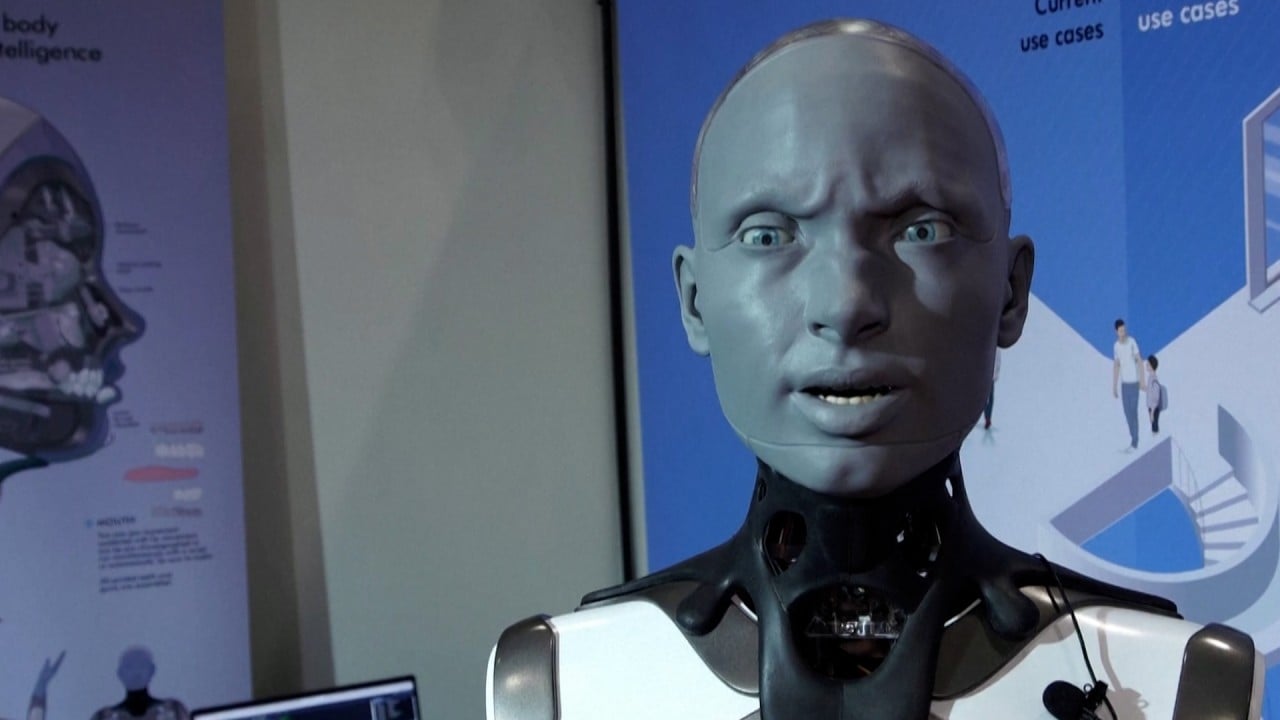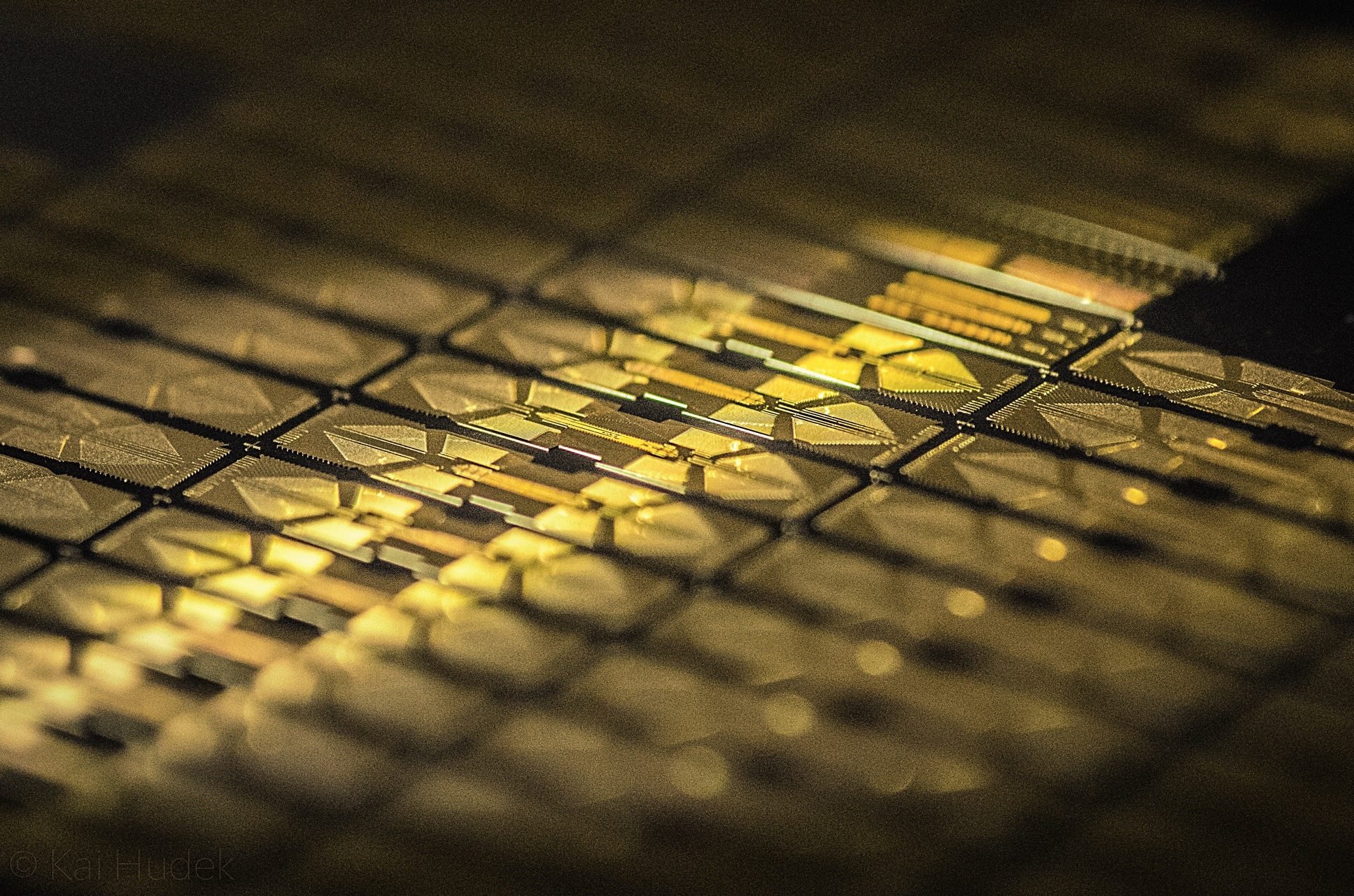
- Quantum computing could give us machines massively more powerful than today’s, but we still have a long way to go, say leaders in the field
The tech story of the century so far has been the mainstream arrival of generative artificial intelligence, which drives the uncanny capabilities of systems such as ChatGPT, and is fast being absorbed into our everyday lives.
Whether to mimic human creativity, double as empathetic counsellor or eliminate clerical drudgery, generative AI has delivered an unprecedented surge in excitement for its potential benefits.
Of equal concern are possible negatives: catastrophic job losses, widespread disinformation, and even – at the wildly unsettling end of the scale – human extinction. As remote as that last possibility may seem, today’s most shocking AI headlines may soon be relegated to footnotes.
Waiting in the wings is a technology with the potential to eclipse the pace of change represented by the GPT revolution, one that could also give AI the rocket fuel it needs to progress from merely sensational, to massively, universally transformative: quantum computing.

Once up and running, quantum computers would exponentially increase processing speed, which in turn would vastly improve our understanding of the world, from the complex molecular structures of things (in other words, the chemistry of pretty much everything) to the way systems (such as economies, the movement of people in cities, the weather) interact with each other in seemingly infinite and unpredictable ways.
A path could then be cleared to cure diseases such as cancer and Alzheimer’s, or create clean energy with planet-saving implications for the environment. The golden promise of quantum computing is simply too spectacular to resist.
What’s more, quantum computing is a natural complement for AI. Where AI brings an ability to self-improve and learn from its mistakes, quantum computers add speed and power.
Google CEO Sundar Pichai has said “AI can accelerate quantum computing, and quantum computing can accelerate AI,” seeding a partnership that promises to do for man-made intelligence what Lennon and McCartney did for popular music.
For decades, intelligent machines languished in an “AI winter”: they managed to beat humans at chess and quiz games, but were too quickly overhyped and did not meet their full potential.
The recent and rapid developments in generative AI, starting in the mid-2000s, are a sign for many that springtime for machine learning has finally arrived.
The same pattern of progress may soon be true for quantum computers, which could represent “one of the most spectacular achievements of science and technology in this millennium – a landmark of humankind’s ingenuity and aspiration to knowledge”, says Professor Giulio Chiribella, director of the Quantum Information and Computation Initiative at the University of Hong Kong.
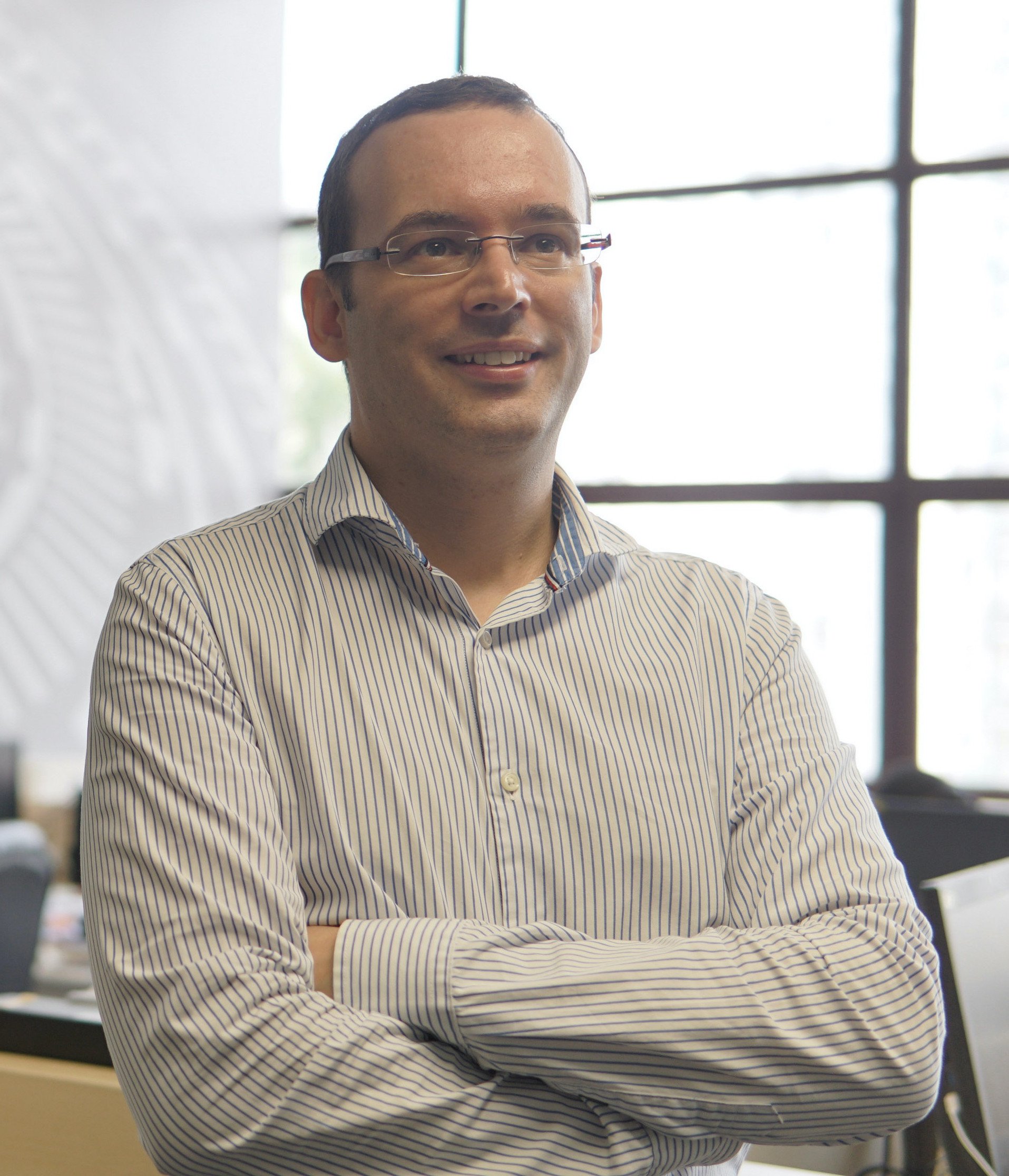
Billions of dollars are being spent worldwide by the private sector and governments to make that happen (China’s quantum-computing investment since the mid-1980s has been estimated at around US$25 billion), but it won’t be easy.
The creation of a fully functional quantum computer is a very tall order because quantum computers are nothing like the smartphones, laptops, desktops or even corporate supercomputers – collectively “classical computers” – that have shaped today’s digital landscape and on which we have come to rely.
Instead of the regular “bits” (binary digits: the smallest units of information) in a classical computer, quantum computers are built with “qubits” (quantum bits).
While bits can be described as switches that are either on or off, thanks to the fundamentally bizarre nature of quantum physics – a realm of uncertainty and probability – qubits can be both on and off at the same time, and in a huge variety of states in-between.
That sounds impossible, but that’s how subatomic particles behave, and qubits are made from atoms and subatomic particles.
Given the scale and hazy nature of qubits, they are extremely difficult to harness in a controlled and repeatable way. That’s why, Chiribella insists, that “building an actual quantum computer is still a tremendous challenge”.
Because qubits are inherently fragile, they have to be kept isolated from any external interference, whether that’s human observation or interaction with nearby particles.
Once compromised, qubits collapse into a state of “decoherence” and become – in the argot of the quantum laboratory – “noisy”.
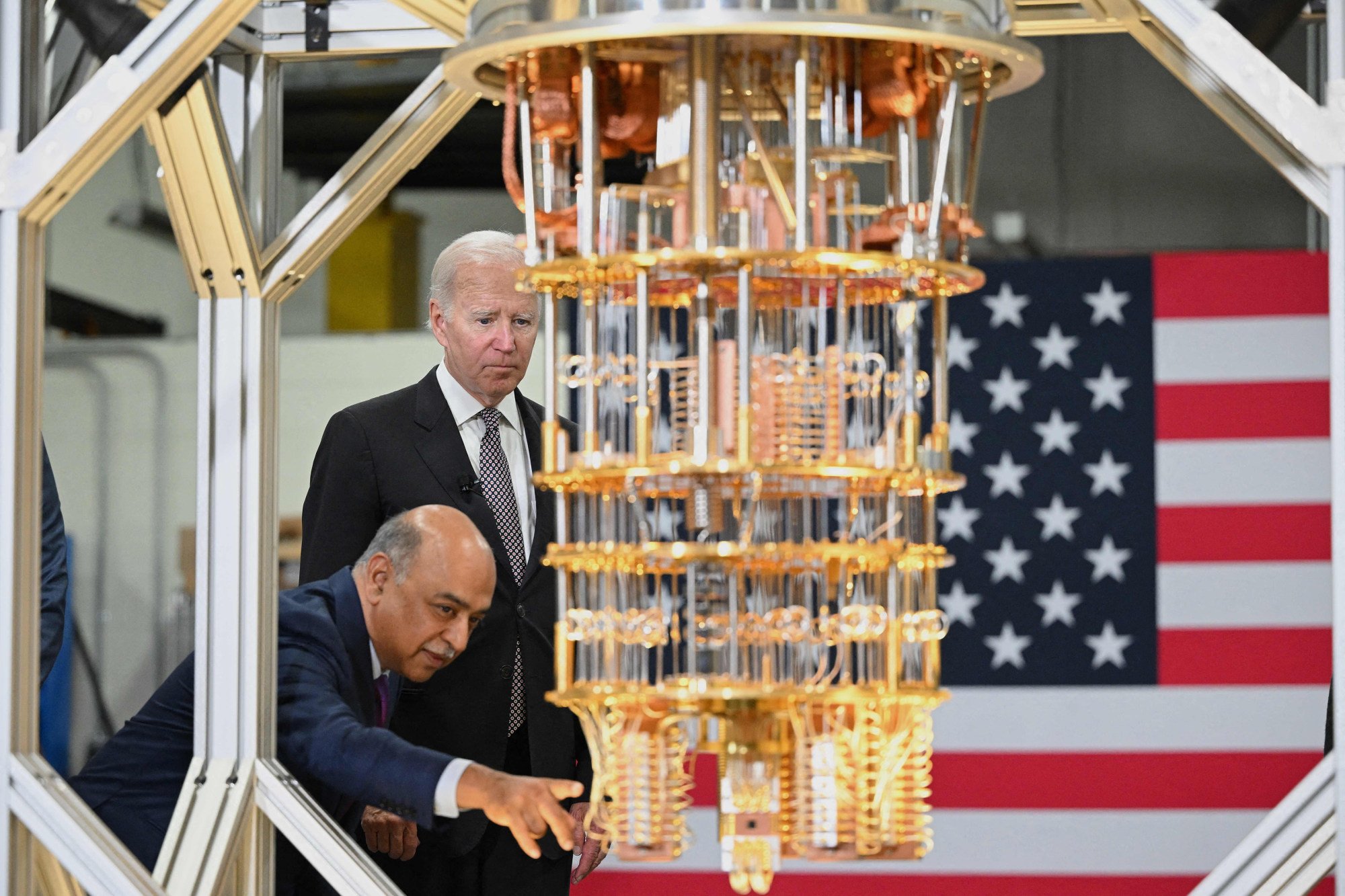
Addressing this noise problem is one of the main difficulties facing quantum-computer scientists. One approach to wrangling mercurial qubits is to keep them at a temperature near absolute zero (minus 273 degrees Celsius/minus 460 degrees Fahrenheit, about the same as the coldest place in outer space), where they are more stable, which is why the structures that surround them resemble giant brass chandeliers: these dazzling interconnected pipes are simply the cooling equipment.
Given those kinds of requirements, it’s safe to assume nobody will be taking a quantum laptop to work any time soon – but in the laboratory, glimpses of quantum computing’s huge potential are starting to emerge.
The end goal is an exponential increase in speed and power over classical computers, which process information in a linear way. Individual quantum computers, by contrast, are designed to perform many calculations in parallel, at the same time.
Sure, you could hook up a bunch of classical computers to work in parallel, but no such arrangement could ever beat a single powerful quantum computer for speed. Complex calculations that would take classical supercomputers thousands of years to crunch could, in theory, be completed by quantum computers in minutes.
To understand how, and to grasp the potential impact of quantum computers, a little background in quantum physics is helpful.
The first glimpses into the less-than-microscopic world of quantum mechanics came from the mathematics and thought experiments of Albert Einstein, Niels Bohr, Erwin Schrödinger and Werner Heisenberg, among others, in the first half of the 20th century.
The reality they described was almost impossible to comprehend, even by their own admission.

In his 1992 book, Dreams of a Final Theory, the late author and physicist Steven Weinberg felt entirely justified in his use of fantastical Wagnerian mythology to describe the insights offered by quantum theory: “Often we have felt as did Siegfried after he tasted the dragon’s blood, when he found to his surprise that he could understand the language of birds.”
That one of the world’s most pre-eminent scientists found the quantum view of the world so magical offers some measure of its wondrous appeal and potential.
There’s no way around it: the quantum world is deeply strange and counterintuitive. That’s because the way things behave at the subatomic level is deeply strange and counterintuitive.
The idea of a “clockwork” universe – established by Isaac Newton and his classical pre-Einstein mechanics – seemed relatively logical and approachable. The quantum view of reality is far more perplexing and less intuitive than the Newtonian version, but it’s something we have to accept.
“Nature isn’t classical, dammit,” proclaimed physicist Richard Feynman in 1981, when thoughts of applying quantum theory to computation were first considered in earnest.
To understand the hazy quantum-ness of nature, Feynman was suggesting, we would require a new kind of computer: a quantum one.
Two of the strangest aspects of quantum mechanics – superposition and entanglement – play a crucial part in quantum computing.
Quantum superposition lends qubits their “on and off at the same time” quality, without which there would be no quantum computers, and quantum entanglement gives quantum computers their massive power, boosting processing ability to exponential levels beyond classical computers.
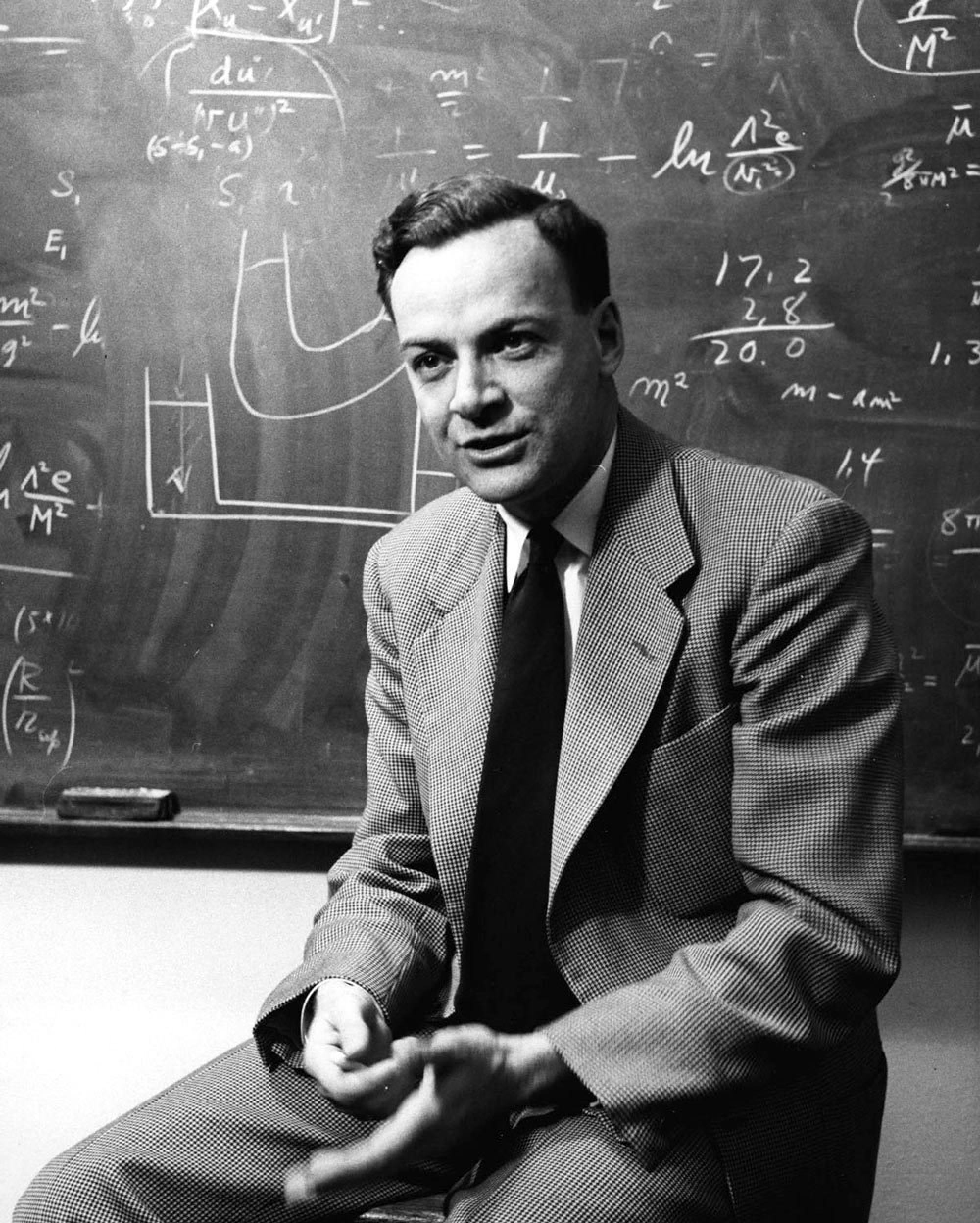
Both of these features are extremely odd compared to the world we can see around us. Superposition, which has to do with measuring and observing particles, has spawned a number of colourful thought experiments, the most famous being Schrödinger’s Cat (named after the aforementioned Erwin), trapped in a box, unseen, theoretically alive and dead at the same time.
So there’s that paradox, and nobody really knows exactly what’s going on with entanglement – not even the smartest of physicists – because it proposes that a pair of particles can share a property that unites them as one object, no matter how far apart they are: one could be here on Earth, the other could be somewhere on the far side of the universe, it doesn’t matter, they are still joined as one.
Entanglement was a stretch even for Einstein, who called it “spooky action at a distance”, but in the century since its discovery, experiment has proven entanglement to be true.
Thanks to the provable effects of superposition and entanglement, the idea of a quantum computer enters the realm of possibility, at least in theory.
Making a quantum computer in the real world, however, requires much more than knowledge of quantum mechanics alone, and the biggest strides towards a practical quantum machine – a eureka moment of sorts – came in mathematics, and the game-changing algorithms figured out by Peter Shor, professor of applied mathematics at the Massachusetts Institute of Technology (MIT).
Algorithms are sets of rules that allow computers to perform calculations, and in 1994, Shor wrote one – immortalised as “Shor’s algorithm” – that effectively provided instructions for the quantum computers imagined by Feynman.

In other words, he had written the software around which quantum hardware could be designed, and in so doing kick-started the race for a useful real-life quantum device.
Jungsang Kim – co-founder and chief technology officer of IonQ, whose mission it is to build “the world’s best” quantum computers – has been immersed in the challenges of making and controlling qubits for the best part of two decades.
“The dirty little secret about qubits is: you can have as many qubits as you want, but qubits are not quantum computers, just like the silicon or sand that you find on beaches is not a computer,” he says.
“First, you need to be able to tell the computer what to do. Second, it has to reliably give you the right answer. The challenge in quantum [computing] is that the errors are still large.
“So when you actually instruct your quantum computer to do a specific calculation, your computer hardware is not perfect, and at some point it’s dominated by noise and it will just do random things.
“When a quantum computer does random things, it doesn’t matter how many qubits you have, you’ll get garbage out.”
The solution to the qubit garbage problem is, however, relatively simple: error correction. By most estimates around 90 per cent of any quantum computer’s processing power will have to be directed towards correcting qubit errors.
The good news for quantum computer scientists is that, given the right algorithms, that is entirely possible. “The key idea is that you don’t need to worry about [qubit errors],” says Spiros Michalakis, a mathematical physicist at the Institute for Quantum Information and Matter – part of the California Institute of Technology (Caltech) in Pasadena.
“All you need to worry about is another simpler algorithm with extra resources, which we call quantum error correction, because you find the errors, correct them, and then continue the computation.”
IonQ, considered one of the front runners in the race for a useful quantum computer, is pursuing what’s known as the “trapped ion” approach to qubits, in which atoms of a rare earth element (ytterbium) are captured and held in place by electromagnetic fields.
“Now we just have to continue to innovate so that it scales,” says Kim, who hopes to have made measurable progress “by the middle of this decade”.
Even if his methods succeed, he faces stiff competition – IonQ’s trapped-ion technique is one of several approaches to quantum computing, each betting on different types of hardware, and relying on different varieties of qubit.
As cosmologist Andrew Pontzen explains in his new book, The Universe in a Box: “The precise hardware is almost irrelevant – it can be based on atoms, light, superconducting metals, or anything else that exhibits quantum behaviour.”
The so-called superconducting qubit machines being developed by a range of household-name companies – including Amazon Web Services, Google, IBM, Intel, Alibaba (owner of the South China Morning Post) and Baidu – have caught the eye because the hardware includes those chandelier-like cooling structures designed to tame volatile qubits.

“The tiny chip that contains the qubits, you can barely see it with your eye,” says Michalakis, when we meet on the Caltech campus where Feynman had taught and Shor had studied.
“Everything else is there to cool [the chip] down so that it can remain quantum and will not be interfered with from the environment.”
Theoretical physicist Alexei Kitaev independently developed an altogether different approach to the qubit – topological quantum computing – and Microsoft has used this as the cornerstone of its own quantum ambitions.
Whichever of these methods first succeeds, or if the best solution for quantum hardware lies elsewhere, overcoming material challenges and fault tolerance is not going to be easy.
Once fully functional, however, quantum computers will be able to do things Michalakis describes as “mind-blowing”. We could see, for example, significant improvements in battery technology.
And in expectation of its advantages, the automotive industry is already collaborating with pioneers in the quantum-computing arena.
Daimler has partnered with IBM, Volkswagen with D-Wave Systems (a Canadian quantum-computing firm) and Hyundai with IonQ.

“If you can increase the energy density of your battery by another factor of two, three or four, then instead of 300 miles (480km), you can go 600 miles and 1,200 miles on [one] charge,” says Kim.
“That actually starts to cross the threshold where they become so much more attractive than fossil fuel. And then we can really make an impact on global warming and all these problems.”
Improved knowledge, through quantum computing, of nitrogenase – the bacterial enzyme that converts nitrogen into ammonia – could make a huge difference to our lives, says Kim.
“There is a classical way of converting nitrogen into ammonia called the Haber-Bosch process, and that consumes a good fraction of the energy that we generate at night, to create fertiliser.
“Bacteria do it at room temperature but we don’t understand the core dynamics of it because it’s too complicated.
“Now, if you can actually get an understanding of that, does that mean that we can save 10 per cent of the energy consumption today that’s used in fertiliser manufacturing? Absolutely.”
Similarly, the mysteries of carbon sequestration could be unravelled by quantum computing, with clear benefits for the efforts to reverse global warming.
Drug design at the molecular level could be revolutionised, opening up new avenues for vaccines and, for example, personalised cancer treatment.

There’s no doubt about it: with effective quantum computing our understanding of chemical processes could become godlike.
Finance and investment, too, could be revolutionised by the qubit. The huge range of factors that produce market fluctuations allow for an almost infinite range of possible outcomes, and modelling these possibilities would be relatively simple for quantum computers.
Forecasts of market movements would become far more accurate. Quantum computers would also be a natural fit for problems of optimisation and cost-saving efficiency: “As I say to entrepreneurs, take any algorithm that you currently need for your business logistics, then see if these theorists have come up with a quantum algorithm that can give you a boost,” says Michalakis.
“How life-changing this would be.”
For now, we remain in the NISQ-era – Noisy Intermediate-Scale Quantum – awaiting the breakthrough moment of quantum supremacy, when a quantum computer will unequivocally demonstrate significant advantage over classical computers.
With its 53-qubit Sycamore machine, Google prematurely claimed quantum supremacy in 2019 – still a fantastic landmark according to Michalakis – followed by similar claims from researchers in China in 2020.
“A team led by Professor Pan Jianwei at the University of Science and Technology of China [conducted] a breakthrough experiment where a light-based quantum computer called Jiuzhang performed a computation faster than the best classical algorithm known at that time,” says Chiribella.
“This experiment reached a speedup of about a trillion trillion times compared to a brute-force classical simulation. Nowadays, it is broadly regarded as one of the major milestones in the quest for quantum supremacy.”

In 2021, Pan took the superconducting qubit approach with a 66-qubit quantum processor named Zuchongzhi, which has since been used in “a number of interesting applications for the study of quantum chemistry and quantum matter”, explains Chiribella.
However, a fully galvanising hallelujah moment in quantum computing has yet to meet with universal acceptance. Observers highlight the selective nature of the calculations used to determine supremacy, and the ongoing challenges of error correction, as evidence that the great dawning of the quantum computer age has been put on hold.
“There are two challenges with quantum supremacy,” adds Chiribella. “One is to achieve it, and the other is to know for sure that we have achieved it.”
Michalakis, like most experts in the field, practises patience. “We try to seed the world with clear minds that can take the flow of excitement and move it away from hype and into deeper, more thoughtful research,” he says.
“I’m an extreme optimist, actually. I think everything is possible: the universe will provide, no matter what you want, but you have to ask for it nicely.”
There are a lot of tasks that classical computers are just really good at, and there’s no point going to a quantum computerJungsang Ki, co-founder and chief technology officer, IonQ
When asked how long the arrival of a powerful quantum computer will take, algorithm guru Shor lands on the guarded side of realistic: “I think quantum computers are going to continue improving and eventually, maybe 20 or 30 years from now, they will be big enough to do something really useful,” he says.
“Maybe if we’re clever, it won’t take that long. But you need several breakthroughs.”
So as we wait for the next eureka moment, what does the immediate future of quantum computing look like?
“I think a lot of these methodologies, as we dive into it, will turn out to be a hybrid problem,” says Kim. “There are a lot of tasks that classical computers are just really good at, and there’s no point going to a quantum computer.
“I think we should use all the ammunition we have in terms of classical computational power and then just get the boost – that classical computers will never give you – with quantum.”
One of the things a lot of people get wrong, says Shor, “is that they think a quantum computer can do anything a classical computer can – just much, much faster. And it turns out that you can only speed up certain problems on a quantum computer”. Hence the likelihood of the kind of hybrid road map suggested by Kim.

Where that road map might lead us is open to speculation, but all scenarios rest on the balance of promise and peril made familiar by the recent rise of generative AI.
For example, quantum computers would have little trouble cracking current data encryption and cybersecurity codes and, as a precautionary measure, tools to withstand future cyberattacks by – as yet unbuilt – quantum devices are already being designed.
Conversely, potential new types of encryption keys generated by quantum computers could be much more secure than current protocols. How quantum success affects the state of computing superiority will therefore depend on the timing and location of its arrival.
The glint of the double-edged sword also flashes whenever thoughts turn to the anticipated partnership between quantum computing and AI.
On one side, the dark waters of existential threat; on the other – as theoretical physicist Michio Kaku writes in his latest book, Quantum Supremacy – the promise of a bright future underpinned by beyond-human intelligence: “AI has the ability to learn new, complex tasks, and quantum computers can provide the computational muscle it needs […]
“In fact, the merger of the two may revolutionise every branch of science, alter our lifestyle, and radically change the economy.
“AI will give us the ability to create learning machines that can begin to mimic human abilities, while quantum computers may provide the calculational power to finally create an intelligent machine.”
Significantly, in June this year, Pan and his team announced another milestone for their Jiuzhang machine: in tests, it performed certain kinds of calculations required for AI 180 million times faster than the world’s fastest supercomputer.
Even with all its noise and errors, Jiuzhang can still produce impressive results: a cause for great optimism among those determined to finally see the day when they can leave the quantum winter behind.
Until then, we can occupy ourselves with the dawning realisation that something philosophically far-reaching has begun to percolate into our shared consciousness from the laboratories of the world’s quantum pioneers.
Quantum physics tells you that you have to occupy all possible points of view because there is no fundamental point of view that is better than anyone else’sSpiros Michalakis, Institute for Quantum Information and Matter, Caltech
For many physicists and mathematicians, every step of the journey towards functional and world-changing quantum computers assumes acknowledgement of an even more profound goal: a greater understanding of the nature of reality.
This could also mean that the very nature of understanding has to be reconsidered.
“The revolution in quantum physics right now is to do a Copernican change of point of view,” says Michalakis, summoning the vast cloud of possibilities baked into the improbable essence of qubits.
“Quantum physics tells you that you have to occupy all possible points of view because there is no fundamental truth. There is no fundamental point of view that is better than anyone else’s. They’re all connected.”
For Michalakis, this confluence of qubits, mathematics and philosophy is crucial, enlightening and – in our quantum universe – inevitable: “You realise at some point that there’s been a misunderstanding of what we need to be pursuing as human beings. The pursuit of truth? That’s wrong.
“If there is no single truth – and if there’s just the illusion of common truth – then you should not be pursuing truth. You should be pursuing understanding.”


